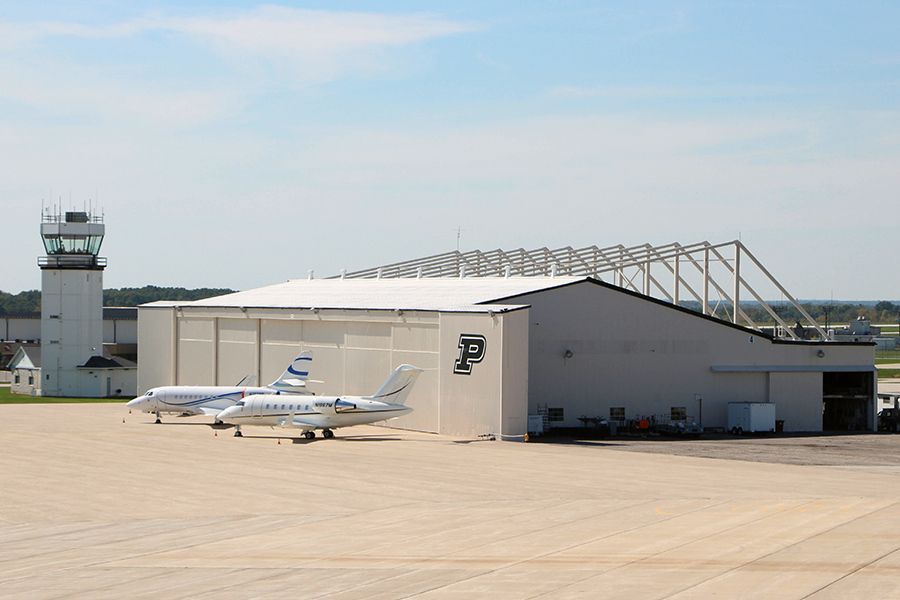'The future in aerospace is autonomy'

New UAS facility to enable research, education, testing
The School of Aeronautics and Astronautics is creating a research and test facility to explore, develop and test unmanned aerial systems (UAS).
The facility is located within Hangar 4 at the Purdue airport in a space that’s approximately 20,000 square feet and 35 feet high. The facility will be equipped with a state-of-the-art motion-capture system that will be the largest in the world.
Motion-capture technology originated in the movie industry but today is finding many applications for UAS and robotics in general. Using infrared light, cameras throughout the facility track the position of reflective markers that can be attached to objects, just as they are attached to actors for animated movies. The position and attitude information is similar to GPS, but the error is significantly less.
The motion-capture system will enable critical research within the new facility. As UAS learn to use computer-vision and other sensors to navigate indoors or in GPS-denied environments, it is important to know the “true” position of the vehicle to track error and improve algorithms. The motion-capture data also can be used for the creation of virtual reality (VR) or augmented reality (AR) environments. The simulated images from VR/AR can be streamed to UAS or people wearing goggles within the facility. VR/AR can be used to construct environments that would be too dangerous or laborious to build in real life. VR/AR also provides a unique opportunity for training pilots to work with UAS in a safe environment.
The size of the facility will enable unique experiments, such as flying fixed-wing aircraft and large swarms, that could not be accommodated in smaller motion-capture facilities.
“We are designing this research and test facility to be state-of-the-art and among the very best indoor UAS facilities in the world,” said James Goppert, the acting managing director for the facility and a visiting assistant professor in AAE.
AAE will lead the continuing development of the test facility with a team of leading researchers and educators from mechanical engineering, electrical and computer engineering, civil engineering, aviation and transportation technology, and computer science.
A distinguished AAE alum has provided $1.25 million that could be matched by others to jump start the development of the UAS research and test facility. So far, $1.45 million has been generated.
“The future in aerospace is autonomy — from package delivery, precision agriculture, infrastructure inspection and surveillance to urban, regional and international air mobility where pilots are not needed,” said Tom Shih, who stepped down as J. William Uhrig and Anastasia Vournas Head and Professor of Aeronautics and Astronautics in July. “This UAS test facility is to educate, nurture and inspire this and the next generation of students to dream what could be and to make those dreams into realities.”
The UAS research and test facility will be equipped and instrumented to reproduce all challenges connected to a mission and mimic the benign or harsh environment under which the mission is to be subjected. Current plans for the facility include a reconfigurable environment, allowing researchers to create various mission environments.
The facility will enable faculty and students to work on resilient flights, flights in swarms and urban air mobility in benign and harsh environments. Harsh environments that can be simulated in the facility include those that could occur naturally, such as wind, rain, snow and sand, as well as those created by humans, such as enabling and denying GPS, jamming and other cyber-attacks.
“Autonomy would change how we live, how we do things and how the world operates, including the world’s economy, which drives everything,” Shih said. “The technology to enable autonomy is ripe for exploration and development. Thus, the timing is right.”
